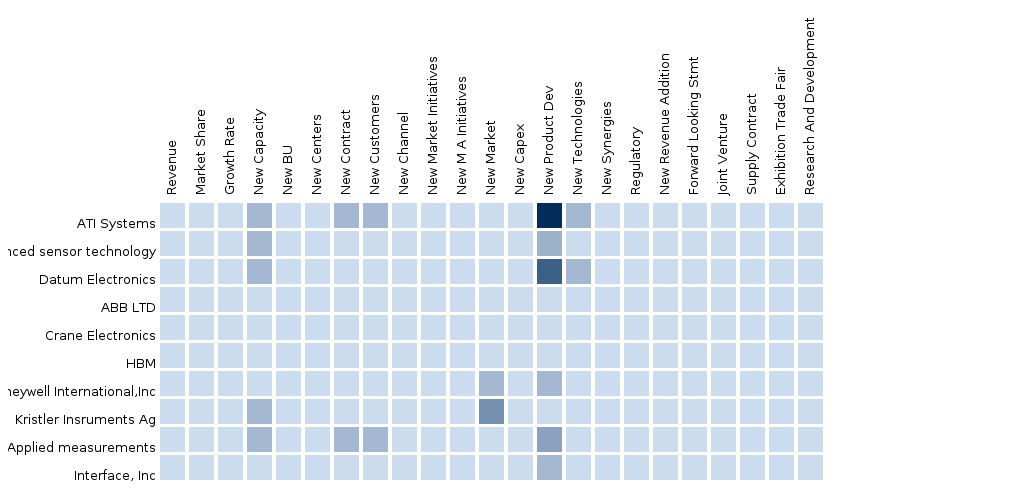Torque sensors have numerous applications in the automotive sector, such as hydraulic actuators, engine dynamometers, and steering torque, among others. The applications of torque sensors in the automotive sector outweigh the applications in other segments such as industrial manufacturing and medical. This is validated by the major share of 30.1% that the automotive applications segment accounted for in 2013, of the global torque sensor market.
In the global torque sensor market, the automotive applications segment was valued at $289.1 million in 2013, and is expected to grow at a CAGR of 8.4% from 2013 to 2018. The rapidly-increasing demand for small cars and the increased use of electric power systems in automobiles are expected to drive the growth of the global torque sensors in automotive market in the coming years. Torque sensors also find applications in real-time torque measurement, engine performance measurement, engine improvement, transmission, chassis performance and driveline of an automobile. In addition, they also allow automobile suppliers to test the operation of fitted ignition switches in early production stages.
New technologies such as Surface Acoustic Wave (SAW) and magnetoelastic have been introduced for automotive applications. They have been observed to provide more precise torque measure than their conventional counterparts such as slip rings or rotary transformers. Some of the common applications of SAW torque sensors include drive shafts, crankshafts, and kinetic energy recovery system (KERS), among others. Torque sensors with magnetoelastic technology are available in the market from major companies such as ABB (Switzerland) and MagCanica, Inc. (U.S.).
The report segments and forecasts the torque sensor in automotive market in terms of the geographic regions such as North America, Latin America, Europe, Asia-Pacific, and Rest of the World (RoW). The report also provides competitive benchmarking of the leading players in this market in terms of their key strategies, product offerings, and other operational parameters, along with the key market drivers, restraints, and opportunities in the market.
Customization Options:
Along with the market data, customize the MMM assessments in accordance to your company’s specific needs. Customize to get comprehensive industry standards and deep-dive analysis of the following parameters:
Product Analysis:
- Usage pattern (in-depth trend analysis) of products (segment-wise)
- Product matrix, which gives a detailed comparison of product portfolio of each company mapped at country and sub-segment levels
- End-user adoption rate analysis of the products (segment-wise and country-wise)
- Comprehensive coverage of product approvals, pipeline products, and product recalls
Data from Manufacturing Firms:
- Fast turn-around analysis of manufacturing firms’ responses to recent market events and trends
- Various firms’ opinions about different applications where torque sensors can be used
- Qualitative inputs on macro-economic indicators and mergers & acquisitions in each geography
Comparative Analysis:
- Market data and key developments of the top market companies
Shipment/Volume Data:
- Tracking the value of components shipped annually in each geography
Trend analysis of Application:
- Application matrix, which gives a detailed comparison of application portfolio of each company, mapped in each geography
1. Introduction
1.1. Objectives of the Study
1.2. Market Definition and Scope of the Study
1.3. Markets Covered
1.4. Stakeholders
2. Research Methodology
2.1. Integrated Ecosystem
2.2. Arriving at Market Size
2.3. Top-Down Approach
2.4. Bottom-Up Approach
2.5. Demand Side Analysis
2.6. Vendor Side Analysis
2.7. Macro Indicators
2.8. Assumptions
3. Executive Summary
4. Market Overview
4.1. Introduction
4.2. Parent Market Comparison
4.3. Drivers and Inhibitors
4.4. Demand Side Analysis
4.5. Vendor Side Analysis
5. Global Torque Sensor in Automotive Market, By Component
5.1. Brushes
5.2. Slip Rings
5.3. Connectors
5.4. Other Components
6. Global Torque Sensor in Automotive Market, By Type
6.1. Magnetoelastic
6.2. Rotary
6.3. Static/Reaction
6.4. Surface Acoustic Wave (SAW)
6.5. Other Types
6.6. Sneak View of the Market
7. Global Torque Sensor in Automotive Market, By Geography
7.1. Research Methodology
7.2. Introduction
7.3. Parent Market Comparison
7.4. Vendor Side Analysis
7.5. Overview of Europe
7.5.1. North America
7.5.2. Latin America
7.5.3. Europe
7.5.4. Asia-Pacific
7.5.5. RoW
7.6. Sneak View of the Market
8. Global Torque Sensor in Automotive Market, By Company
8.1. Competitive Landscape
8.1.1. Mergers & Acquisitions
8.1.2. New Synergies
8.1.3. New Product Development
8.1.4. Other Expansions
8.2. ABB Ltd.
8.2.1. Revenue Mix for 2013
8.2.2. Historical Data
8.2.3. Product and Service Offerings
8.2.4. Recent Developments
8.2.5. MMM Analysis
8.3. Futek Advanced Sensor Technology, Inc.
8.3.1. Revenue Mix for 2013
8.3.2. Historical Data
8.3.3. Product and Service Offerings
8.3.4. Recent Developments
8.3.5. MMM Analysis
8.4. Honeywell International, Inc.
8.4.1. Revenue Mix for 2013
8.4.2. Historical Data
8.4.3. Product and Service Offerings
8.4.4. Recent Developments
8.4.5. MMM Analysis
8.5. Kistler Instrumente AG
8.5.1. Revenue Mix for 2013
8.5.2. Historical Data
8.5.3. Product and Service Offerings
8.5.4. Recent Developments
8.5.5. MMM Analysis
8.6. Measurement Specialties, Inc.
8.6.1. Revenue Mix for 2013
8.6.2. Historical Data
8.6.3. Product and Service Offerings
8.6.4. Recent Developments
8.6.5. MMM Analysis
8.7. PCB Piezotronics, Inc.
8.7.1. Revenue Mix for 2013
8.7.2. Historical Data
8.7.3. Product and Service Offerings
8.7.4. Recent Developments
8.7.5. MMM Analysis
9. Appendix

Please fill in the form below to receive a free copy of the Summary of this Report
Please visit http://www.micromarketmonitor.com/custom-research-services.html to specify your custom Research Requirement














